BUSINESS
Adapting to Constant Change in the COVID Era
SEMA Council and Network Leaders Share Their Latest Initiatives, the Challenges They Face and How They Continue to Pivot
By Chad Simon
Automotive specialty-equipment businesses across all industry segments continued to learn to adapt in 2021 because of limitations put in place earlier in the year due to the lingering COVID-19 pandemic. As those restrictions began to lift over the summer, virtual gatherings slowly gave way to in-person events, culminating with the return of the SEMA Installation Gala and Exhibitor Summit, held July 28–30, and the 2021 SEMA Show, held November 2–5 in Las Vegas. However, some of the biggest challenges the industry still faces are supply-chain disruptions coupled with peak demand and increasing government overreach, which the SEMA-led Recognizing the Protection of Motorsports Act (RPM Act) aims to address.
We spoke with leaders of each SEMA council and network to find out what initiatives they are working on, what’s currently trending in their markets, and the challenges they face in navigating the global pandemic heading into 2022.
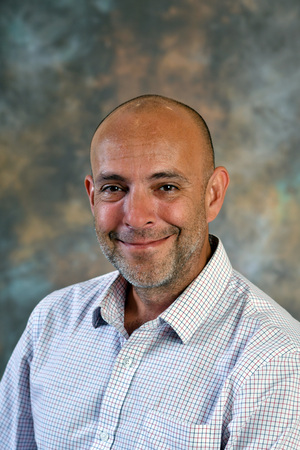 Automotive Restoration Market Organization (ARMO)
Automotive Restoration Market Organization (ARMO)
Chair: Ben Tucker, Camaro Central/Firebird Central/Muscle Car Industries/Muscle Car Central
Early on, COVID-19 impacted all of ARMO’s in-person meetings and programs. With no shows to attend, programs such as the Counselor Outreach and Take a Kid to a Car Show were both cancelled. ARMO did what everyone else did: We pivoted. ARMO’s direction changed to a virtual one, which led to some great content. ARMO’s Builder Series and our virtual general membership meetings have been huge successes. ARMO has since focused on both virtual and in-person events. The 2021 Hot Products Showcase at Spring Carlisle was well attended and beneficial for ARMO-member companies. We also held a well-attended mixer there, which was an excellent networking opportunity.
On the restoration side, we’ve experienced the highest demand coupled with the lowest supply ever. Supply-chain issues and price increases have affected our industry as a whole. Builders and restoration shops have been some of the hardest hit. With parts shortages, builds had to be put on hold until the parts were back in stock, but the restoration industry is on fire and thriving overall and will be strong for the next couple of years. However, supply issues and price increases will still be a problem.
Shipping rates are higher than ever before, and material price increases are now a daily issue. The number of new enthusiasts who started projects in 2020 and 2021 have driven the market to a new all-time high; however, the market should start to flatten once the projects/restorations that were started during the stay-at-home mandates come to an end.
ARMO is working on enhancing benefits for the general membership through our programs and events. Current projects include ARMO Builder Series, feature vehicle opportunities, ARMO Hot Products Showcase at Spring Carlisle, new-product awards, Member Spotlights, networking events, and cross collaboration with the SEMA Action Network for the latest on legislation in our industry.
With current supply problems, an emerging trend we are seeing is “having it is selling it,” where many customers are more willing to take a substitution to a backordered item. If they are waiting on black door panels but only green panels are available, many will buy them and dye them black. We are also seeing an increased demand for safety and comfort parts. Items such as suspension kits, disc brake kits and aftermarket A/C kits are ever so popular.
Looking forward, the overall size of the restoration market will decrease due to acquisitions. The companies we knew in the past are now being bought up and incorporated under new parent companies. With containers costing $25,000–$30,000 to ship, some companies are waiting to send products, and many backorders are stacking up in hopes of shipping later at less-expensive rates.
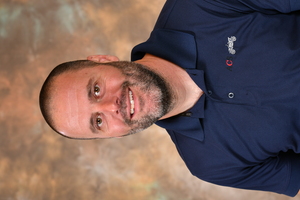 Emerging Trends & Technology Network (ETTN)
Emerging Trends & Technology Network (ETTN)
Chair: Rob Simons, Automotive Consulting Services
We had a couple of initiatives that were impacted by the pandemic significantly due to a lack of face-to-face interactions. One was our Vehicle Sharing program, which was something we were trying to get off the ground. It’s a networking program between manufacturers for test vehicles. The idea was to have SEMA facilitate those connections, anonymously at first, and if the manufacturers want to participate then they would connect directly. We had written a proposal that went to the SEMA Board, and they asked us to pilot it and recruit 10 member companies to sign up for the program. We were starting to get some traction, but when COVID-19 hit, nobody wanted to lend out their vehicles, so we put that on hold and we’re just now trying to revive it.
The ETTN Networking, Education, Resources and Development (NERD) Symposium recently received Board approval. It will be akin to MPMC’s Media Trade Conference, where we bring people together and have them interact with engineering-specific service providers. We’ll also have educational sessions and other activities, including a measuring session and tour of the new SEMA Garage in Detroit, where this event is proposed to take place next June.
Another program we had proposed and gotten Board approval for was our Student Competition program. It was a partnership between ETTN and the Society of Automotive Engineers (SAE) to participate in their competition where students build a Formula car and do competitions and design reviews. Ian Lehn, who was the former ETTN chair and was spearheading this program, figured out ways to keep it moving through participation and a virtual design review for the student programs while forging a more formal partnership between SEMA and SAE. This is an example of how we had to pivot and adapt to figure out what we can do if we can’t follow the initial plan.
The other thing we did was double down on the programs we could still execute, such as our Live Chat program, which didn’t require personal interaction. That was successful, and we will continue it for next year. We also held our long-range planning meeting virtually, which we split into two sessions. We were able to strategize and plan for new initiatives that we put before the Board for approval. We also have a new education committee putting together education videos that are prerecorded and available online, but the instructor will be live when it’s broadcasting.
Challenges we’re facing include high demand from the consumer side while manufacturers are still struggling on the supply side. There are a lot of backorders, raw materials are in short supply, and we have labor issues, so all those factors are limiting the ability to deliver product.
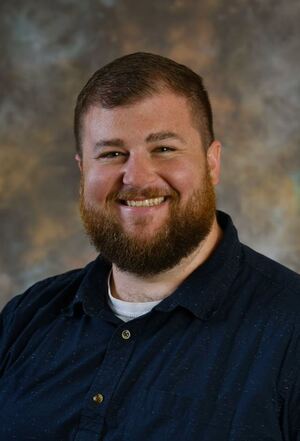 Hot Rod Industry Alliance (HRIA)
Hot Rod Industry Alliance (HRIA)
Chair: Danny Agosta, Steele Rubber Products
As with everyone, we were moved by the COVID-19 pandemic to do many of our meetings virtually. I think we’ve been able to capitalize and leverage the situation to expand our reach and allow members to engage at the same time all over the country. The situation has pushed us to embrace what we can do with streaming technology and utilize it to our advantage. A lot of shows are still going on as scheduled—some with restrictions, some without. It depends on the event’s location.
Next year is about as predictable as last. Looking at the macro environment, things are tumultuous, and there’s always threatening legislation. However, most members are reporting growth, and the main concern is being able to keep up with demand. Everyone is suffering from supply-chain issues and sourcing labor; however, those issues are better to have than low demand.
If everything stays together, I think our segment of the industry will shape up nicely. There are still a lot of concerns and unknowns with the pandemic. Social and business gatherings are, of course, the biggest focus when it comes to vulnerability, but enthusiasm for the hobby is still there. In some ways, the repression of that enthusiasm may mean pent-up eagerness to get out and participate in shows, but shows are only one metric to watch. A lot of businesses are busier than ever, and that’s good news.
There are several new events and opportunities this coming year, including an expansion of the Education Days program, where we’ll bring a panel of experts together at the Grand National Roadster Show to discuss several topics in front of an audience. We are also looking forward to an East Coast HRIA event called “Deuces Wild” that’s taking place in Atlantic City. There are several benefits to companies that participate in the show, and we’re excited to bring HRIA messaging to a new audience. We have also completed the HRIA History Book project. We’re proud of how it turned out and think it’s critical moving forward to know where we’ve been.
A current industry trend is restomodding, which goes well beyond restoration and into performance and technology. People like building cars that they can drive and that have all the niceties of their modern vehicles but with the style of the classics. Other than that, I see the lines of what constitutes a “hot rod” getting blurred. Trucks, vans, wagons and some vehicles into the ’90s come from overseas. The cars we’re seeing come in all shapes, sizes and flavors, but the spirit behind the builder/owner seems to be the commonality.
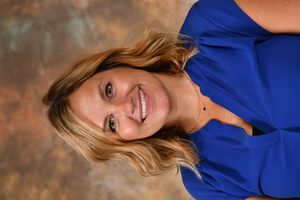 Motorsports Parts Manufacturing Council (MPMC)
Motorsports Parts Manufacturing Council (MPMC)
Chair: Melissa Scoles, QA1
In 2021, COVID-19 forced us to switch our annual Media Trade Conference from an in-person event to a virtual one. We are planning to continue down that virtual path again in 2022. We are fortunate that our conference ended up being very successful and opened up some new media categories that were able to attend, so we’re excited to expand on that for next year.
Racing and motorsports as a whole have been thriving for several years. Our hope is that they will continue to do so and we will be able to get more fans back in the stands. People want to get out and race and enjoy their vehicles. We’re hoping that trend continues and more people are introduced to the sport.
We are working to connect our members and help educate them on a variety of different things that are relevant to our industry. We will host many events throughout the year, including bringing back our happy hour at the PRI Trade Show and several meetups at races and motorsports events. We’re also hosting webinars based on a variety of topics, including different ways to work with sanctioning bodies.
As manufacturers, we are faced daily with supplier and labor issues, but we’ve got passionate customers within the market itself, and those of us who work in the industry are also passionate about what we do, the products we provide, and the experiences we’re able to give our customers because of our products.
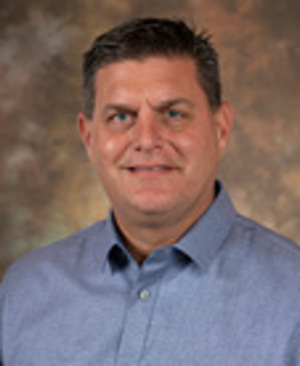 Professional Restylers Organization (PRO)
Professional Restylers Organization (PRO)
Chair: Josh Poulson, Auto Additions
In the beginning of the pandemic, things seemed to slow down, especially as people wondered how business was going to be affected. Since the realization that sales are strong and businesses have been able to sustain or grow during this time, it has allowed for our council to refocus on how to grow the industry and help our members. That growth will continue, but maybe not at the pace that it has during the first part of 2020.
Within PRO, many of our members work with car dealerships, which now find themselves with an unfamiliar problem. There’s more demand for new cars than there is inventory from the OEs because of supply shortages, COVID or transportation delays. With this new problem, you may now see a new-car franchise that at one time had 300 vehicles to sell on its lot and now has less than a dozen. That is a problem across the country and all brands, and it has restricted many restylers within the PRO community to not be able to preload vehicles or build vehicle packages for dealerships to market to the community. The lack of inventory just doesn’t allow it, so restylers have to get creative in making up for those lost sales. I do see inventory getting better than the anemic state it is in now, but it will never get back to the way it was, because the OEs and dealers have learned that they can make just as much money or more without having the inventory they once had.
With the lack of inventory, restylers are focusing on other solutions to grow their businesses. The easiest way is to do more retail sales. The economy is good, and a lot of people with discretionary income are ready to spend on their vehicles, so why not capitalize on that? Many shops are experiencing record retail sales and have found ways to tap into that segment of the market instead of relying so much on their wholesale customers.
The second way is to be creative with preload programs. Most restylers have done an excellent job over the years of working with dealerships to pick out a vehicle, then install a number of accessories on it, which then creates a package that the dealerships can put on their showroom vehicles and sell to the public while making a much higher margin than any package from the factory. Now, with the inventory shortage, restylers are trying to fill the gaps with new inventory, which means adding some wanted accessories to a vehicle that comes in, knowing it will sell quickly. Or they are working out a program with a dealership to find a few niche products to install on every vehicle the dealer gets, which allows the dealer to justify selling that vehicle with a larger markup, knowing that, again, with the lack of vehicles, it will still sell quickly.
As a council, we are focusing on how we can continue to assist restylers in their efforts to bring more ideas and packages to the market, which in turn helps our manufacturer members sell more of their products. One of the initiatives we are working on is teaming up with Auto Shows of North America, which runs most of the auto shows across the country. We are working out a program for SEMA to have a presence at those shows to build awareness about our industry, help with legislation, and also to show off what we can do to new vehicles. This will require partnering with local restylers in these markets to build some show cars and have local representation at the shows, along with a national SEMA presence.
Because of supply shortages, most of the trends right now are gap fillers. For instance, a customer might want a new F-150, and one of his preferences is a leather interior. Ford tells him that requires him to buy a Lariat or a Platinum model. However, when he gets to the dealership, the dealer tells him that it doesn’t have any of those models and won’t have them for a long time. Restylers can train dealers to understand that we can add leather to an XLT, which is more likely to be available. That gets customers a vehicle with a lower payment and makes them happy. Understanding these gaps, finding products that fill them and then training local dealers to understand how we can assist them to fill these gaps will translate into sales over the next six to 12 months while we wait for inventory levels to increase.
One of the biggest concerns facing our part of the industry is different from the rest of the industry. While many of our friends are worried about how to keep relevant with the approach of electric vehicles (EVs), PRO has continued to restyle those vehicles the same as most other vehicles. Additionally, being able to sell a customer a vehicle 100% online with no interaction and having the car delivered to the customer’s home could possibly eliminate some steps in the current process that many dealers use to upsell consumers on accessories or add them to a vehicle to close a deal. Therefore, with those unknowns, we are working on ways to make sure we stay relevant in the car-buying experience.
 SEMA Businesswomen’s Network (SBN)
SEMA Businesswomen’s Network (SBN)
Chair: Cathy Clark, Bob Cook Sales
Luckily for SBN, we started to discuss and develop virtual events in late 2019 with our Virtual Education Series before COVID-19 hit. We have four main categories of members that we want to reach (students, entry level, mid level, and C suite), and not all of the women in each category are able to travel to where our in-person events are held each year. We were able to pivot those events quickly and reach a portion of our membership that we might not typically reach by adding two virtual networking events. We hosted a wine night and a game night and had wonderful participation. We are currently planning for our 2022 events and hope to incorporate in-person events while expanding our virtual offerings.
As we’ve seen the country start to open back up, there has been a real emphasis on finding employees to keep our businesses and industry going. This is a great opportunity for women in the automotive aftermarket to get a foot in the door and advance. This is our opportunity to make an impact in the industry.
I believe that the automotive aftermarket is due for an adjustment. We had unexpected and unsustainable growth through the COVID-19 pandemic, and I think we can expect to see a change in the near future for our industry with inflation, gas prices and the unavailability of materials and workers.
I believe that women are trending in the automotive industry. Between 70% to 80% of all consumer purchasing decisions are driven by women, and we need to continue to expand our offerings toward that segment. Women are more likely to watch how-to videos than men, and they spend an average of more than one hour per day shopping online.
We also need to support women-owned businesses in our industry. Forty percent of businesses in the United States are women-owned, with the number in the automotive aftermarket being far lower. The biggest challenges to our industry are inflation, the continued COVID-19 pandemic, and the unwillingness of some people to return to the workforce.
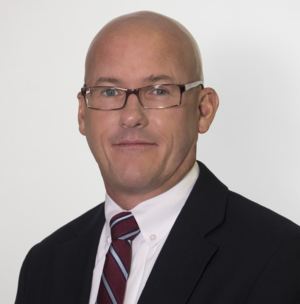 Truck & Off-Road Alliance (TORA)
Truck & Off-Road Alliance (TORA)
Chair: Troy Wirtz, Dee Zee Inc.
TORA has done a good job adjusting to COVID-19 and the changes it brought upon us. We continued to meet regularly through Zoom and Teams video conferencing. We were able to regain our momentum as the economy reopened, but getting all the orders shipped is the biggest challenge.
The marketplace will continue to grow as trade shows come back. It will take the better part of 2022 to catch up with the demand we have today. Supply chains are challenging in all aspects, including labor, raw material and shipping. We have been struggling with all of those issues since mid-2020. However, the industry is strong and has been since late 2020. Any signs of weakness have not surfaced, so I would encourage riding the wave while you can. There is no doubt that the economy will slow at some point, but we live in a country that always finds a way to keep pushing.
TORA’s major focus is on participation from the side-by-side market. TORA offers a great deal of benefits to its members, and our focus is to educate those in the marketplace about those benefits. At our council summit in July, we determined that we wanted to spend resources on land-use awareness through consumer education. Educating consumers about proper land use is important in keeping our trails preserved, clean and open. We have a great team and many volunteers to spread awareness of good trail use and proper care.
We recently launched our LinkedIn page to get in front of our members as quickly as possible. The social-media trend continues to grow, and we recognized that the council was not getting the exposure we needed. This additional platform will be a great enhancement to engage our members while encouraging new ones.
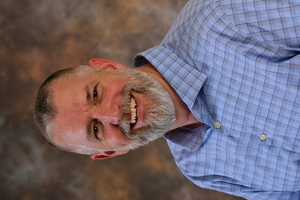 Wheel & Tire Council (WTC)
Wheel & Tire Council (WTC)
Chair: Todd Steen, Jackson Marketing Group
In-person interaction is key to building relationships, and COVID-19 has slowed that process. We’ve got a lot of new people right now. Most of us were together at the leadership council in July, but the networking opportunities were not there even prior to that. Virtual networking is just not the same. From an industry standpoint, challenges include everything from supply chain to manufacturing to retail. With wheel companies and tire manufacturers, so much comes from overseas and even here in the United States, so when they’re short on materials, their distribution channels are impacted.
I think there are going to be more mergers and acquisitions in the next year or so to strengthen the distribution channels and gain leverage to commit to buying in volume to make it easier to get product. The tire and wheel assembly is going to become more of an integral part of the vehicle. You’ll be able to see the vehicle communicating to dealerships about what service is needed and how to schedule alignment, tire pressure checks and rotations.
We have a handful of virtual meetings and networking opportunities coming up. We hung our hats on embracing education nearly three years ago, so we’re doing several webinars geared toward manufacturers, retailers and the industry as a whole. We’re also going to have a meetup at the PRI Trade Show and a handful of
in-person events in 2022.
Larger wheel sizes on lifted trucks with a lot of accessorizing and aesthetics added to the suspension and tire-and-wheel assembly, and that is a trend that will continue. Everybody thought that was going to be a flash in the pan, but I don’t see it slowing down, and we’d be remiss to ignore it. Another trend that’s growing and is often overlooked is direct-to-consumer sales. If a manufacturer or retailer does not have an online strategy for selling product and making the consumer experience a pleasurable one, they’re missing the boat.
The buying habits of the tire industry are antiquated because tire sizes are kind of a mystery to some people. Even if we can increase sales growth, it’s still a small percentage in comparison to what the market is, because at the end of the day, if somebody orders a tire, they still have to get it mounted somewhere. The hurdle is connecting the dots between the buying experience and ease of understanding what they’re buying, getting the wheels and tires mounted, and enjoying the product. Another challenge in our industry segment is the RPM Act. Although we are not immediately impacted by it, we are keeping it front and center, knowing that if people can’t race cars, they won’t need racing and off-road wheels.
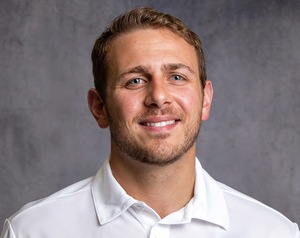 Young Executives Network (YEN)
Young Executives Network (YEN)
Chair: Nick Caloroso, Driven Lighting Group
The focus of what we do is in-person networking. Due to the pandemic, we had to limit the number of networking events, so we shifted into virtual calls once per month initially. As time progressed, we dialed it back to once a quarter.
I think the industry is going through a lot of changes. We’ll see how the proliferation of EVs continues to develop and mature. It’s still too early to tell what people are going to do with EVs in terms of performance. We’re starting to see more of an investment in performance EVs with drop-in components for older vehicles, such as turnkey swap kits and things of that nature. I think it will continue to grow and become more popular.
One of the things we’re most excited about is the implementation of our professional development program. It’s something we’ve been working on and championing for many months now. Essentially, we’re creating a two-day, in-person event in which we’ve partnered with Dale Carnegie. We’re going to take in 25 industry employees under the age of 40. There will be networking events in the evenings and professional development courses during the day, and it’s going to make a big impact on their careers and development and keep them engaged in the industry.
The recent uptick in government regulatory activity is creating uncertainty and putting a lot of companies and jobs at risk. It’s definitely impacting small businesses.
It’s a scary time for certain market segments. They’ve done things the right way, and now the right way is no longer considered the right way. The recourse is not very clear. In general, it’s creating a lot of questions for the future of certain market segments that are legacy for our industry.






